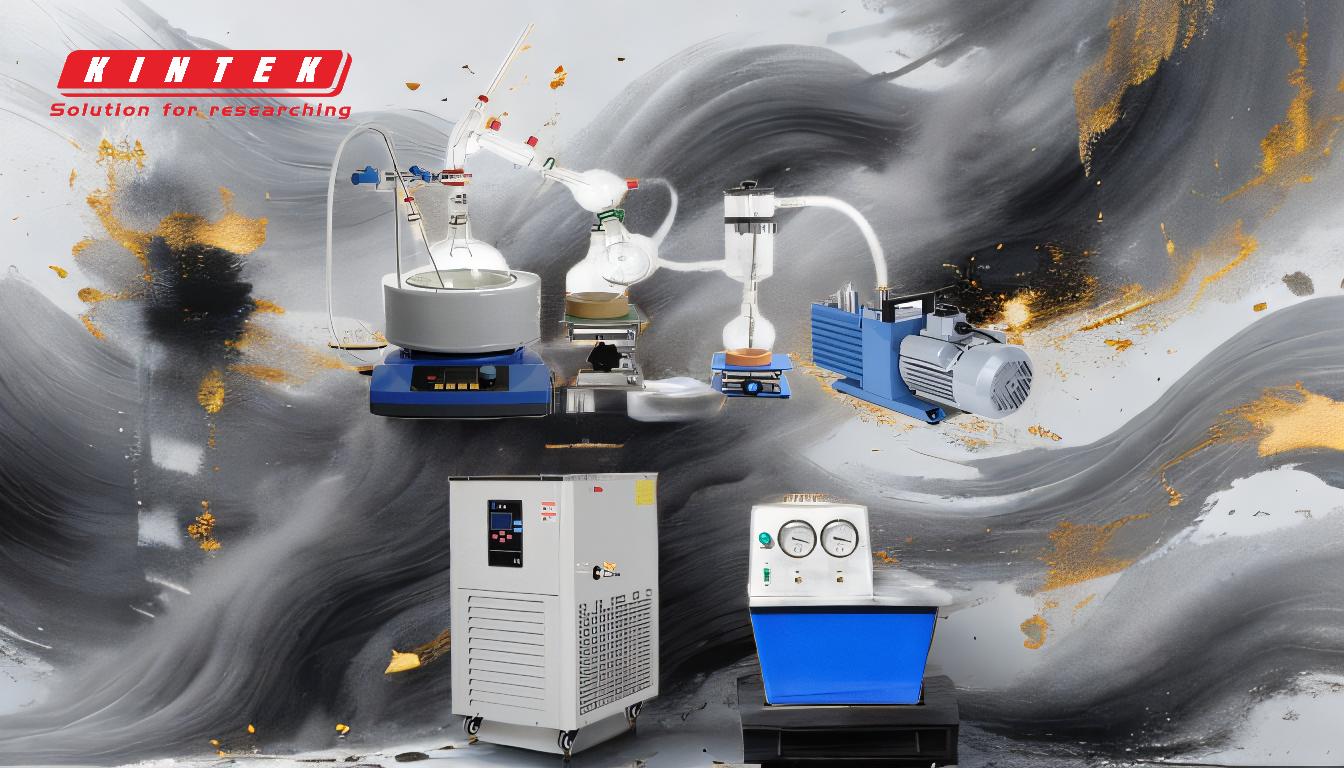Simple distillation is a fundamental technique used to separate components of a liquid mixture based on their boiling points. The process involves heating the mixture to vaporize the more volatile component, condensing the vapor back into a liquid, and collecting the purified distillate. The equipment required for simple distillation is relatively straightforward and includes a heat source, a distillation flask, a condenser, a receiving flask, and standard glassware. These components work together to ensure efficient separation and collection of the desired liquid. Below is a detailed explanation of the key equipment needed for simple distillation.
Key Points Explained:

-
Heat Source:
- The heat source is essential for providing the energy needed to vaporize the liquid in the distillation flask. Common heat sources include:
- Heating Bath: A water or oil bath that provides uniform heating to the distillation flask.
- Hot Plate: An electric hot plate that can be adjusted to control the temperature.
- Bunsen Burner: A gas burner that provides direct flame heating, though it is less commonly used due to the difficulty in controlling the temperature precisely.
- The choice of heat source depends on the boiling point of the liquid and the level of temperature control required.
- The heat source is essential for providing the energy needed to vaporize the liquid in the distillation flask. Common heat sources include:
-
Distillation Flask:
- The distillation flask, often a round-bottom flask, holds the liquid mixture to be distilled. It is designed to withstand heat and is typically made of borosilicate glass, which is resistant to thermal shock.
- The flask is connected to the condenser via a distillation head, which allows the vapor to travel from the flask to the condenser.
-
Condenser:
- The condenser is responsible for cooling the vapor back into a liquid. It consists of a glass tube surrounded by a cooling jacket through which cold water flows. The most common type of condenser used in simple distillation is the Liebig condenser, which is simple and effective.
- The cooling water source can be a chiller, a cold water bath, or even tap water, depending on the setup.
-
Receiving Flask:
- The receiving flask collects the condensed liquid (distillate) after it passes through the condenser. It is typically a smaller round-bottom or Erlenmeyer flask.
- The receiving flask should be positioned correctly to ensure that the distillate flows smoothly into it without spillage.
-
Standard Glassware and Accessories:
- Distillation Head: Connects the distillation flask to the condenser and often includes a thermometer adapter to monitor the temperature of the vapor.
- Thermometer: Measures the temperature of the vapor, which is crucial for determining when the desired component is being distilled.
- Clamps and Stands: Used to securely hold the distillation flask, condenser, and receiving flask in place.
- Vacuum Pump (Optional): In some cases, a vacuum pump may be used to lower the boiling point of the liquid, especially in vacuum distillation setups. However, this is not typically required for simple distillation at atmospheric pressure.
-
Additional Considerations:
- Cooling Water Source: A reliable source of cooling water is necessary to ensure efficient condensation of the vapor. This can be a simple water tap or a more sophisticated chiller system.
- Safety Equipment: Safety goggles, heat-resistant gloves, and a fume hood (if working with volatile or hazardous substances) are essential to protect against potential hazards during the distillation process.
In summary, the equipment required for simple distillation includes a heat source, a distillation flask, a condenser, a receiving flask, and standard glassware. Each component plays a critical role in ensuring the efficient separation and collection of the desired liquid. By carefully selecting and setting up these components, one can achieve effective and safe distillation.
Summary Table:
| Equipment | Purpose |
|---|---|
| Heat Source | Provides energy to vaporize the liquid (e.g., heating bath, hot plate). |
| Distillation Flask | Holds the liquid mixture and withstands heat (e.g., round-bottom flask). |
| Condenser | Cools vapor back into liquid (e.g., Liebig condenser). |
| Receiving Flask | Collects the purified distillate (e.g., Erlenmeyer flask). |
| Standard Glassware | Includes distillation head, thermometer, clamps, and stands. |
| Safety Equipment | Ensures safe operation (e.g., goggles, gloves, fume hood). |
Need help setting up your distillation equipment? Contact our experts today for personalized guidance!











